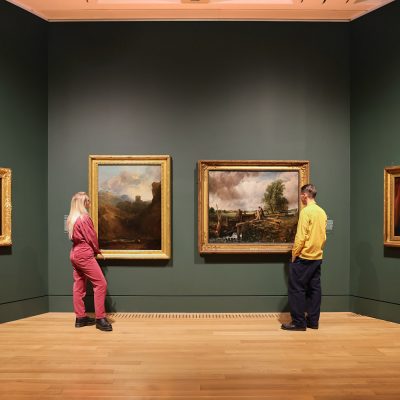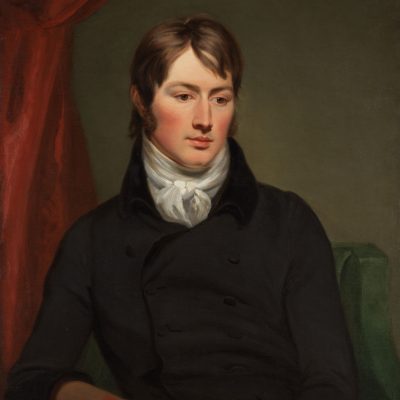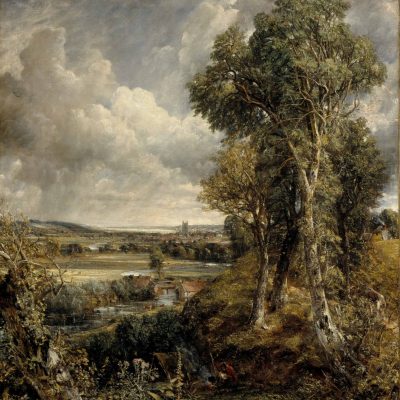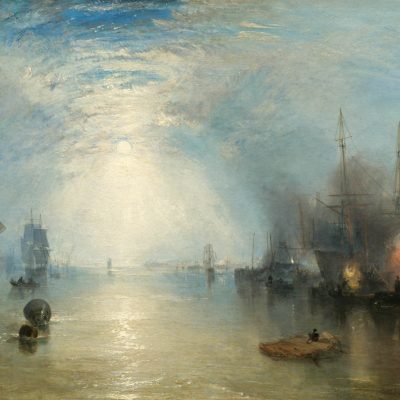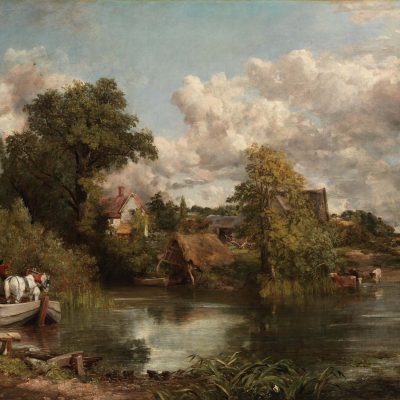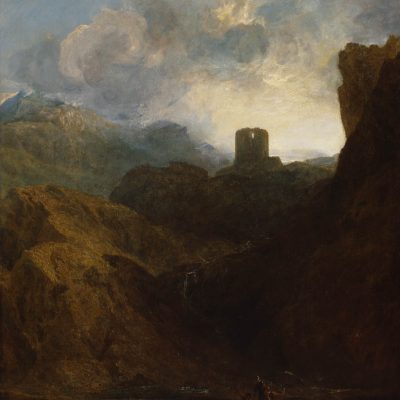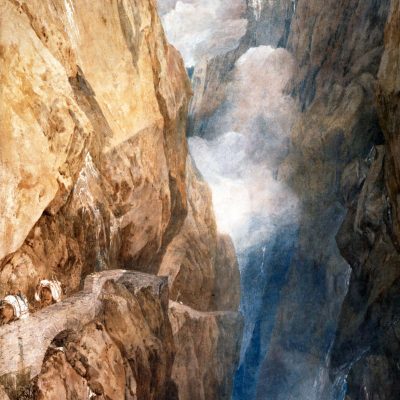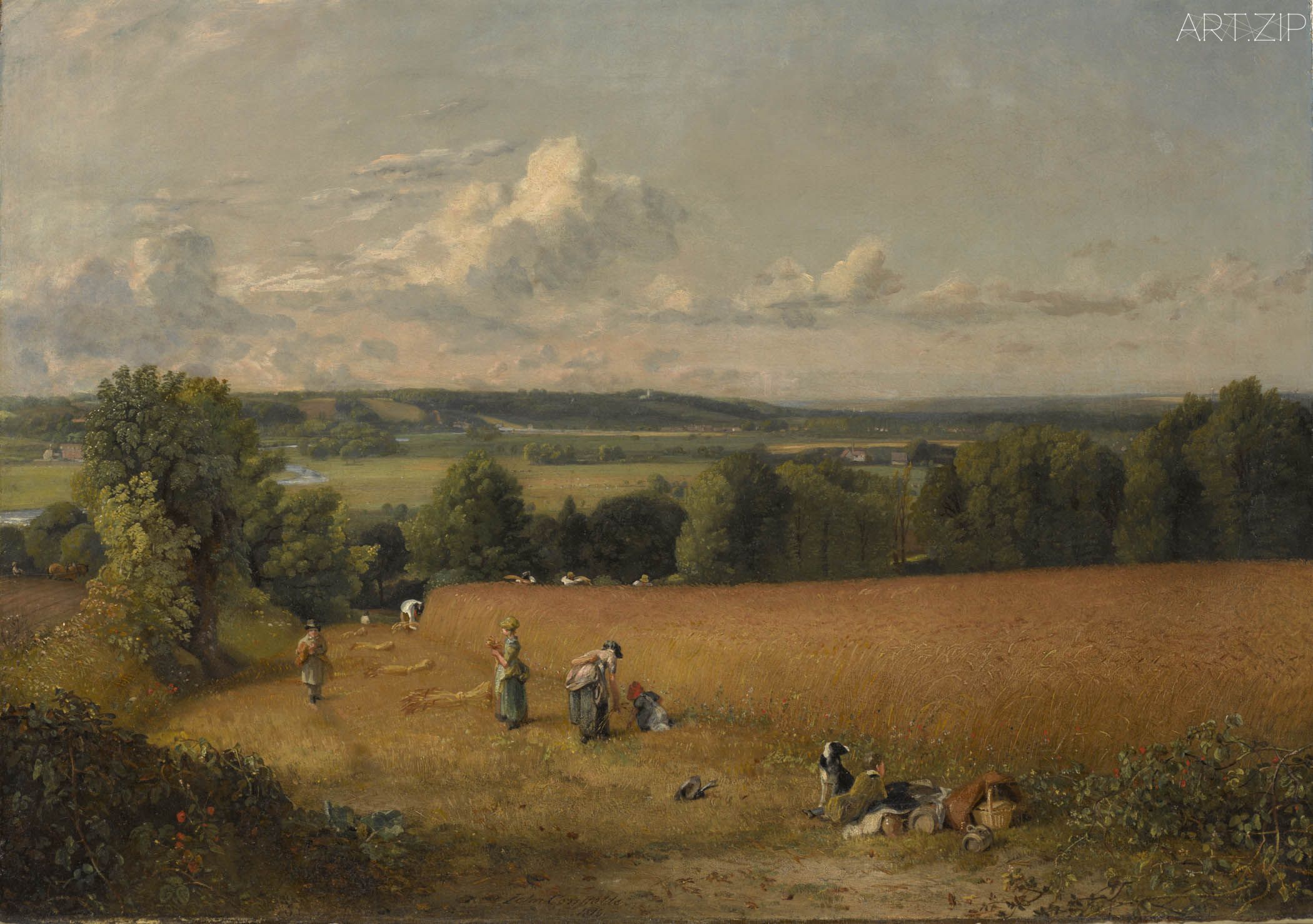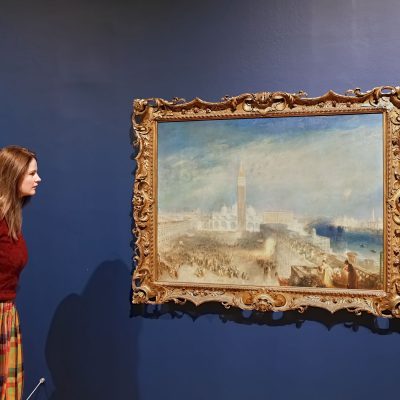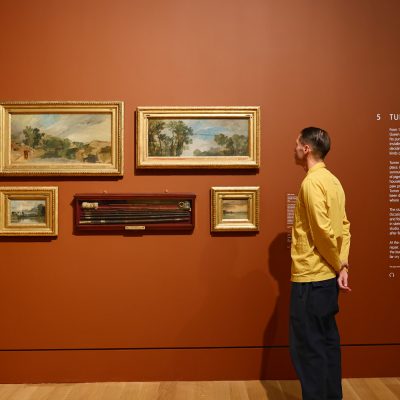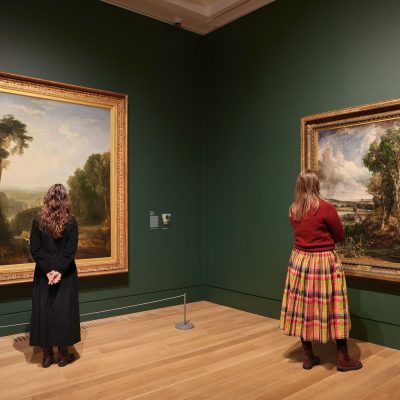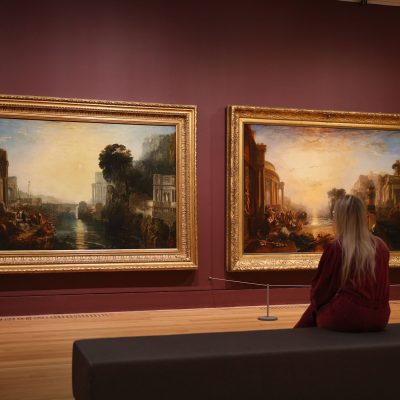
One of the most extraordinary coincidences in the history of British landscape painting is undoubtedly the near-simultaneous appearance of J. M. W. Turner (1775–1851) and John Constable (1776–1837). Born less than a year apart, the two artists opened up entirely different pathways for landscape art—one rushing toward light and imagination, the other rooted in soil and reality.
Currently on view at Tate Britain, Turner and Constable: Rivals and Originals coincides with the 250th anniversary of both artists’ births. It is the first exhibition in the UK to present them side by side on such a scale, re-examining the subtle, underlying rivalry that has shaped their place in art history.
This is not only a grand gathering of major works; it is also a curatorial experiment structured through “comparison”, reminding visitors that the greatness of landscape painting lies not in its depiction of nature, but in how it allows artists to express themselves.
Silent Competition: Parallel Paths of a Prodigy and a Late Bloomer
Turner and Constable were born eleven months apart, yet their lives unfolded at dramatically different speeds. The timeline at the entrance, marked by age rather than year, is the key to understanding their relationship. Turner entered the Royal Academy Schools at fourteen, exhibited there for the first time at fifteen, became an associate at twenty-four, and a full academician at twenty-seven, a true early genius. Constable, by contrast, pursued art despite his family’s disapproval and did not receive the RA title until he was fifty-two.
Yet it is precisely this difference in pace that created the exhibition’s fascinating, tense counterpoint. Both artists were deeply committed to landscape, but their distinct personalities, modes of learning, and life experiences led them down divergent paths. Turner’s paintings were shaped by travel, light, and imagination; Constable’s landscapes were grounded in the Suffolk countryside, outdoor study, and an unwavering fidelity to the atmosphere of nature. They pulled against each other, yet also spurred one another on.
By the 1830s, both had achieved acclaim for their bold expansions of landscape art, and critics frequently cast them as rivals because of their sharply contrasting styles. In 1831, Constable deliberately hung his Salisbury Cathedral from the Meadows beside Turner’s Caligula’s Palace and Bridge at the Royal Academy, prompting critics to compare Turner’s luminous, mythic Italian scenes with Constable’s damp English vistas—“water and fire”, as some described them. These two works are reunited in the exhibition, letting viewers once again experience this collision—or fusion—of opposites.
Their most famous “silent duel”, however, occurred during the 1832 Royal Academy Summer Exhibition. That year, their paintings were placed next to each other. Constable added a few strokes of red to brighten his work; Turner noticed this, stayed silent for three days, then added a tiny red buoy to his own seascape. That single dot instantly transformed the entire painting—heightening contrast, intensifying force. Constable, upon seeing it, uttered the now-legendary remark: “Turner’s been here and fired a gun.”
A looped video clip from Mike Leigh’s Mr. Turner recreates this moment, making the “silent confrontation” startlingly vivid. Their dynamic—watching, suppressing, inspiring—runs through the exhibition from beginning to end.
Considerate Curation: Warmth in Timelines, Walls, and Narrative Rhythm
What makes this exhibition especially moving is its sense of “consideration”, not merely aesthetic, but rooted in sensitivity to the viewer’s experience and the flow of art history.
The age-marked timeline at the entrance is the perfect example. By presenting age instead of year, visitors instantly grasp the rhythm of the two lives, naturally wondering: What was each artist doing at a given age? With a simple visual structure, the exhibition plants two parallel lifelines in the viewer’s mind.
Throughout the galleries, the curators’ attention to detail is palpable. Cat paw prints appear on the walls, a playful touch referencing one of the seven kittens kept by Turner’s housekeeper. These humorous traces soften the usual solemnity of an exhibition of landscape masters and lend a humane charm to the history. In addition, quotes from period criticism are printed directly onto the walls, forming a parallel reading of historical commentary and the works themselves.
The exhibition’s narrative flow is exceptionally smooth: beginning with strong juxtapositions, then moving into separate trajectories, gradually clarifying their differences over time, and finally placing them together again to re-heighten their contrasts.
The final room plays interviews with four contemporary artists—Bridget Riley, Frank Bowling, George Shaw, and Emma Stibbon—reflecting on Turner’s and Constable’s influence on their own landscape thinking. The film brings visitors from history back to the present, reminding them that these two artists are not only figures of the past, but also shape the ways we view the world today. This arc, from striking opening to gentle conclusion, is elegantly executed.
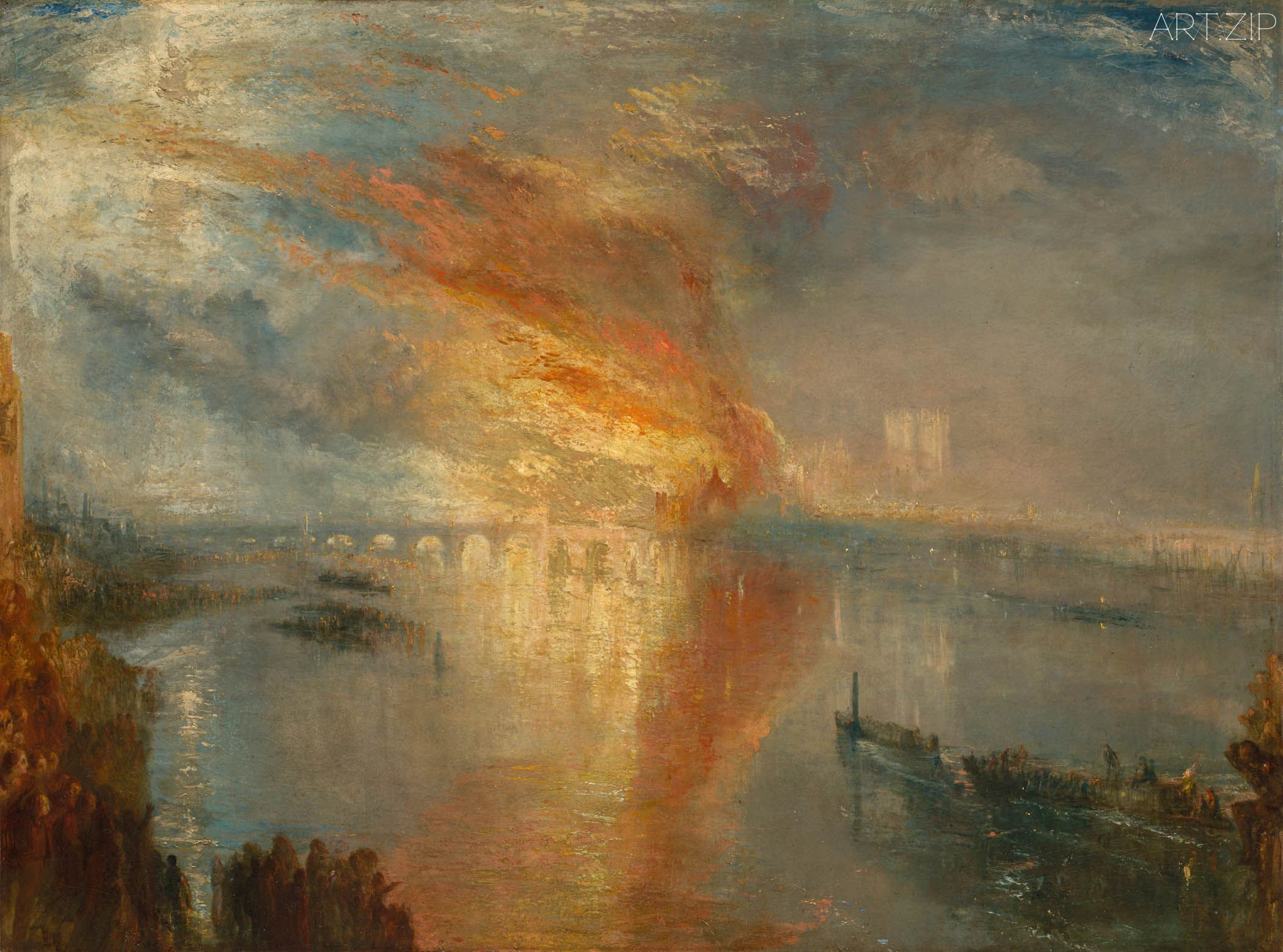
JMW Turner, The Burning of the Houses of Lords and Commons, 16 October 1834, 1835. Cleveland Museum of Art. Bequest of John L. Severance 1942.647
Tools of the Trade: The Physical Labor Behind Landscape Painting
Another highlight of the exhibition is its display of the artists’ tools and sketching materials, drawing visitors into the physical reality behind the artworks. Constable’s sketching stool, portable paintbox, and outdoor oil studies immediately reveal how he captured humidity, shifting light, and moving clouds. His method was not based on memory but on placing his body directly in nature, listening to wind, rain, and sky. The cloud studies and watercolors on view are not mere drafts but the foundation of his pictorial language.
In sharp contrast stands Turner’s approach. His sketchbooks, faded watercolor cakes, and travel cane all point to a different mode of experiencing landscape: wandering, moving, seizing the instant of light, then transforming these 「raw data」 into vast, poetic oil paintings in the studio.
These two sets of tools and habits represent the deepest divergence between them. Constable’s landscapes emerge from intimacy, rootedness, and observation; Turner’s from distance, motion, and imagination. Through real objects, the exhibition makes these differences physically immediate.
Turner and Constable: Rivals and Originals is unforgettable not only for its remarkable selection of works, but also for its brilliantly thoughtful curation, which re-maps the complex relationship between the two masters. They competed, inspired, and defined each other without ever fully overlapping. By aligning their lives as two parallel yet intersecting trajectories—and by weaving together paintings, tools, criticism, and contemporary echoes—the exhibition reveals how they jointly expanded the boundaries of landscape art.
英國風景畫史上最奇妙的巧合之一,恐怕是约瑟夫·马洛德·威廉·特纳(1775–1851) 與 約翰·康斯特博(1776–1837)了。他們幾乎在同一時間誕生,兩人相差不到一年,卻開啓了兩條截然不同的風景畫道路——一條奔向光與想象,一條扎根於泥土與真實。
泰特不列顛美術館正在展出的《特納與康斯特博:競爭與原創》(Turner and Constable: Rivals and Originals),恰逢兩位藝術家 250 週年誕辰,是英國首次以如此規模將兩人並置,重新審視這段「暗暗較勁」的藝術史關係。
這不僅是一次重量級作品的集合,更是一場以「對照」作為敘事線索的策展實驗,讓觀眾重新意識到:風景畫之所以偉大,不是因為它描繪了自然,而是因為它讓藝術家得以表達自身。
暗暗較勁:天才與晚成者的平行軌跡
特納與康斯特博出生僅相差十一個月,可人生速度卻截然不同。展覽入口那條標注年齡的年表,是理解兩人關係的關鍵起點。特纳14歲作品進入皇家藝研究院學習,15歲便在這裡首次展出自己的作品,他24歲成為準院士,27成為院士,是名副其實的早熟天才;而康斯特博則在家庭的反對中堅持成為藝術家,直到 52 歲才獲得 RA 頭銜。
然而,正是這種節奏差異,使他們在藝術史上形成奇妙又緊張的對照。兩人都在風景畫領域深耕,卻因性格、時代學習方式與生活背景的不同,走上完全不同的道路。特納的作品來自旅行、光線和想象;康斯特博的風景則來自其家鄉薩福克鄉間、戶外寫生與對自然氣息的忠誠。他們既互相拉扯,又互相激發。
到了19世紀30年代,特納與康斯特博都因大膽拓展風景畫而備受推崇,他們鮮明的風格差異也使評論界不斷將二人並置為競爭對手。1831年,康斯特博主動在皇家藝術學院將自己的《從草地眺望索爾茲伯里大教堂》(Salisbury Cathedral from the Meadows)與特納的《卡利古拉的宮殿與橋》(Caligula’s Palace and Bridge)並排展出,更加讓評論家們對特納明亮神話式意大利景致與康斯特博潮濕英格蘭風光進行了對比,被譽為「水與火」。這兩幅作品在這次展覽中再次被放到了一起,讓觀眾們再次體驗這種「水火不容」,也可以說是「水火交融」。
而兩人最著名的「暗暗較勁」發生在 1832年皇家藝術學院夏季展的改畫事件。那次展覽,特納和康斯特博的畫放在了一起,康斯特博在畫作上點了幾筆紅色,使之更亮眼。特納看到後,沈默了三天,在自己的海景畫上加了一個小小的紅色浮標。這一點紅,瞬間讓整幅畫跳脫出來,色彩對比增強,氣勢奪人。康斯特博看完後說出那句傳世名言:「特納來了並開了一槍。( Turner’s been here and fired a gun. )」 展覽中循環播放 《Mr Turner(2014)》 電影中的對應片段,使這一段藝術史中的「無聲對戰」變得極其直觀,這種彼此觀察、互相壓制、同時又互相成就的張力,貫穿整場展覽。
策展貼心:從年表、展牆到敘事節奏的溫度
這場展覽令人特別感動之處,在於策展非常「貼心」,這種貼心不只是形式上的美感,而是對觀眾觀看體驗與藝術史敘事的深刻理解。
入口以年齡標注的年表,就是最典型的例子。年齡的呈現讓觀眾立刻掌握兩人的人生節奏,從而在觀展時自然帶入「他們在各自某個年齡究竟處於怎樣的位置」這一時間意識。這種結構化的視覺信息,輕輕鬆松就在觀眾心中建立了兩條平行人生的節奏對照。
而在展廳中,策展也處處透出細節的關懷。展牆上出現的貓咪腳印,讓人會心一笑。腳印來自特納管家養的七隻小貓中的一隻。這些幽默的小巧思輕輕緩和了風景畫巨匠展覽常有的嚴肅感,讓歷史顯得更有人情味。此外,一些評論語被直接寫在牆上,配合作品呈現,使得歷史批評與作品本身形成一種平行觀看的結構。
展覽整體敘事節奏也十分流暢:先以強烈的並置製造視覺衝擊,再拆分兩人的創作脈絡進行講述,隨著時間線推進逐漸將兩人的差異明確化,之後再將他們放在一起再次讓大家感受到二人的不同。
最後一間展廳循環播放四位當代藝術家的訪談——布里奇特·萊利(Bridget Riley)、弗蘭克·鮑林(Frank Bowling)、喬治·肖(George Shaw) 與艾瑪·斯蒂本(Emma Stibbon)——他們談論特納與康斯特博如何影響自己的風景思考。影片將觀眾從歷史帶回當下,提醒觀眾特納與康斯特博不僅屬於過去,也關乎今天的觀看方式。這種從強烈開場到溫柔落點的結構非常優雅。
藝術用品的細節:風景畫背後的身體力行
展覽的另一大亮點,是呈現了藝術家的工具與寫生材料,讓觀眾走進作品背後的真實現場。例如,康斯特博的寫生椅、小巧便攜的調色盒、野外油彩速寫,使人立刻明白他為何能夠捕捉空氣濕度、光線變化、雲層運動。他的寫生方式不是憑記憶,而是身體直接置於自然之中,與風、雨、雲對話。展出的雲研究(cloud studies)與水彩稿,不只是草稿,而是康斯特博繪畫語言的基礎。
與之形成鮮明對比的是特納的創作方式。他的速寫本、褪色的水彩塊、旅行用的拐杖,都指向他的另一種風景經驗:旅行、移動、捕捉光的瞬間,再在室內將這些「原始資料(raw data)」轉化為富含詩意的龐大油畫。這兩套工具與方法,形成了特納與康斯特博藝術語言最根本的差異。康斯特博的風景來自親密、扎根與觀察;特納的風景來自距離、運動與想象。而這些差異,通過展覽中真實的物件,被具象化地呈現得極其清晰。
《特納與康斯特博:競爭與原創》(Turner and Constable: Rivals and Originals)之所以令人難忘,不僅因為展出了大量重要作品,更因為策展以極其細膩而有智慧的方式,重新整理了兩位巨匠之間的關係:他們競爭、互相激發、彼此定義,卻從未真正重合。展覽將他們的生命並列成兩條並行卻不斷交叉的軌跡,再通過作品、工具、評論與當代回聲,展示他們如何共同擴展風景畫的邊界。
Text by 撰文 x Shoran Jiang 姜嘯然
Edited by 編輯 x Jackie Liu 刘洁铠


